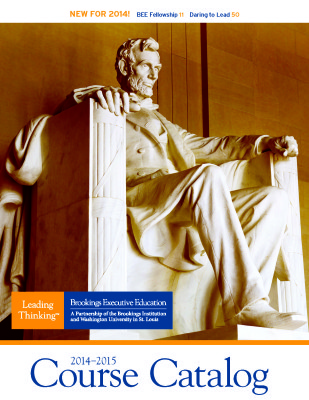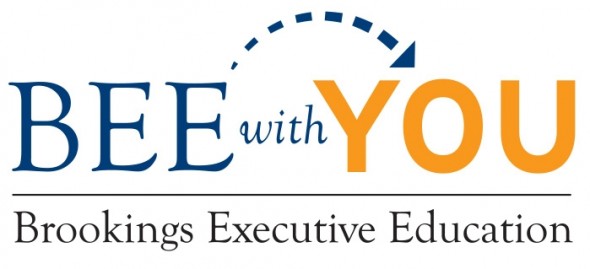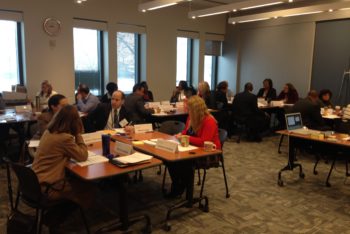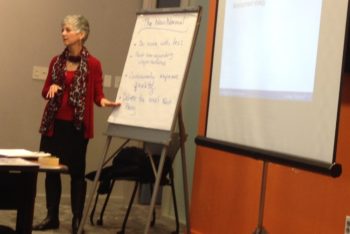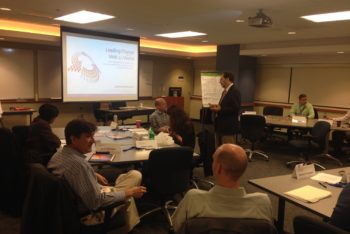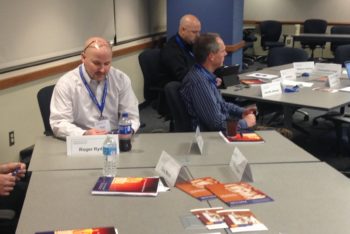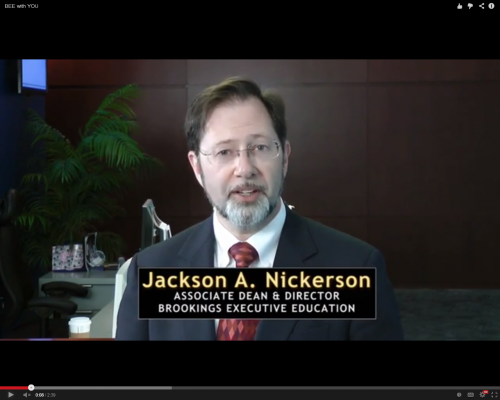On November 19, 2014 Brookings Executive Education (BEE), with support from Booz Allen Hamilton (BAH), hosted a one day seminar on the Future of the Senior Executive Service (SES). The co-chair of the event, Dr. Ron Sanders, chairman of BEE’s Advisory Board, BEE adjunct faculty, and Vice President/Senior Fellow at BAH wrote the following summary of the event (posted on Federal Times, 12/3/14).
Back to the Future: A Brookings Executive Education Summit charts a Course for ‘Modernizing’ the SES
A Quiet Crisis? Established by the 1978 Civil Service Reform Act, the Senior Executive Service (SES) is one of our Federal government’s most important and—except for the occasional scandal—least visible institutions. Key to making government work, its over 7,000 members operate at the ‘boundary layer’ between politics and policy on one hand, and effective execution on the other.
And as the SES approaches the half-century mark, it’s no exaggeration to suggest that it is at risk. The well-publicized malfeasance of just a few of its members has put it squarely in the cross-hairs of Congress and the public, but while the headlines will fade, the demographics won’t…by next year, fully 64% of current SES members will be retirement-eligible, and the best and brightest of their replacements—current GS-14s and 15s—no longer automatically aspire to its lofty but increasingly tarnished status.
A Possible Blueprint for SES Reform? With that daunting backdrop, over two dozen current and former senior government executives—senior career and appointed leaders who have served both Republican and Democratic administrations—recently convened at the Brookings Institution for a day-long ‘summit’ on the future of the SES. Sponsored by Brookings Executive Education and Booz Allen Hamilton, the summit’s proceedings (to be published next spring by Brookings Press as part of its Innovations in Leadership book series) are intended to serve as a blueprint for modernizing the SES…while preserving its original vision and values.
The summit was keynoted by OMB Deputy Director Beth Cobert and OPM Director Katherine Archuleta, and participants included Ambassador Pat Kennedy, Under Secretary of State for Management; Chris Mihm, GAO Director for Strategic Issues; Prof. Don Kettl, Dean of the University of Maryland’s School of Public Policy; Sean O’Keefe, former NASA Administrator; Thad Allen, former Commandant of the Coast Guard; Bob Hale, former DOD Comptroller; Scott Gould, former VA Deputy Secretary; and Christine Fox, former Acting Deputy Secretary of Defense.
Other participants included Tish Long, former Director of the National Geospatial Intelligence Agency; Rafael Borras, former DHS Under Secretary for Management; Beth McGrath, former DOD Deputy Chief Management Officer; Danny Werfel, former OMB Comptroller and Acting IRS Commissioner, and Dan Blair, President of the National Academy of Public Administration (NAPA). Hosted by Mary Ellen Joyce, new NAPA Fellow and executive director of Brookings Executive Education and myself, the event was moderated by Tim Clark, NAPA Fellow and Editor at Large for the Government Executive Media Group.
Among other things, summit participants unanimously agreed that the original, founding vision of the SES—a mobile corps of career executives intended to provide non-partisan leadership in service of ‘the government of the day’—was worth preserving and protecting, as critical today as it was at its birth almost fifty years ago. However, we also concluded that the SES needed to be modernized if it is to realize that vision in this, the second decade of the 21st century. For example:

A Brookings Executive Education Summit charts a Course for ‘Modernizing’ the SES. USOPM Photo By: Tim Grant
Modernize the ECQs? Summit participants all agreed that one area in desperate need of modernization was OPM’s set of Executive Core Qualifications (ECQs). Essentially the ‘admissions test’ for new SES members, the ECQs have been around since its inception, and while some of them may represent timeless leadership qualities, those core competencies need to be refreshed to include emerging, 21st century senior leadership requirements—things like the ability to manage chaos and complexity, connect the dots, ‘see around corners’ to anticipate the next crisis, and lead multiple agencies towards a common goal without benefit of formal authority…in other words, the ability to effectively lead the entire Federal ‘enterprise’ and not just a single agency.
Abandon CDPs and QRBs? Summit participants also questioned the efficacy of Candidate Development Programs (CDPs) and Qualifications Review Boards (QRBs). Both have been around since the inception of the SES, and almost no one at the summit believed they were meeting their intended purpose. Less than a third of new SES members are being selected from CDPs—IRS offers a notable exception in that regard—suggesting that in their present form, they are simply not worth the investment. Participants had a similar view of the QRB process, noting that it was largely a paper exercise that had little chance of screening out unqualified SES selectees.
While some argued that the way to ensure the viability of CDPs would be to make them the mandatory source for SES selections (like the military’s Officer Candidate Schools), there was a general consensus that both CDPs and the QRB process needed substantial re-engineering. Many argued that the QRB function should be delegated to agencies, with some sort of OPM post-audit. Others suggested that agencies (or OPM) employ rigorous, simulation-based assessment centers to more effectively evaluate CDP applicants and/or even those proposed for promotion to the SES. Interestingly, IRS employs a similar approach, one that is arduously front-end loaded to maximize post-program success…and they enjoy a 98% CDP-to-SES selection rate.
Make Mobility Mandatory? According to the summit’s participants, executive mobility remains one of the most important elements of the SES’s original vision, and one of its biggest disappointments. With only a few exceptions—the US Intelligence Community’s civilian ‘joint duty’ requirement for one—the SES corps remains organizationally and functionally stove-piped. That said, summit participants (most of whom had held multiple leadership positions in and out of government) all argued that mobility added immeasurably to an executive’s development, and many advocated making it mandatory, like the military, the Senior Foreign Service, and the IC.
Short of that, many noted that mobility could be significantly improved if OPM and/or OMB were to proactively facilitate voluntary individual reassignments. For example, participants suggested things like a ‘super Executive Resources Board’ to guide interagency executive placements, perhaps assisted by an internal, OPM or OMB-based executive search operation. Even something as seemingly-simple as a searchable database of executive dossiers would help, so that cabinet officers in search of career executive talent could look beyond their internal candidate pool. In that regard, everyone agreed that posting SES vacancies on USA Jobs was largely an exercise in square-filling, with little hope of actually producing viable candidates.
Carrot-and-Stick Accountability? Finally (and inevitably), summit participants also discussed the issue of SES accountability, termination, and expedited appeal rights, all stemming from recent VA legislation. While those with private sector experience noted that ‘at will’ employment is the standard there, everyone agreed on the need for some due process protections for career senior executives, at the very least to guard against politicization, and many were reserving judgment regarding the new VA process. As always, the proof will be in its implementation, but many suggested that it may have a ‘chilling effect’ on VA’s SES corps, as well as on its succession pool. That development notwithstanding, most argued that greater SES accountability (not to mention greater more mobility and responsibility) is a good thing, but it should be offset by increased salary potential—in other words, greater risk should entail greater reward. However, that would require legislation, and in the face of congressional and public antipathy, summit participants were pessimistic in that regard.
Bottom Line: Just Do It. That’s a quick-and-dirty summary of the SES Summit (we plan to provide more details in advance of the Brookings book), but if there’s some good news in all of this, it’s that aside from compensation reforms, almost all of the suggestions considered by the Summit—modernized ECQs, simulation-based assessments, delegated QRBs, facilitated mobility—can be implemented without legislation…and could even mitigate against some of the more extreme proposals currently being considered on the Hill.
In that regard, we all applauded recent SES improvements undertaken by the Administration…as well as the leadership and commitment to this worthy cause demonstrated by OMB Deputy Director Beth Cobert, OPM Director Katherine Archuleta, and their political and career staffs. Those initiatives, which include a new on-boarding program, a series of agency-based SES pilots, and the President’s planned meeting with SES members, left summit participants with some cause for optimism, and we all pledged to continue our individual and collective efforts to support them.
Photo credit: USOPM Photo By: Tim Grant
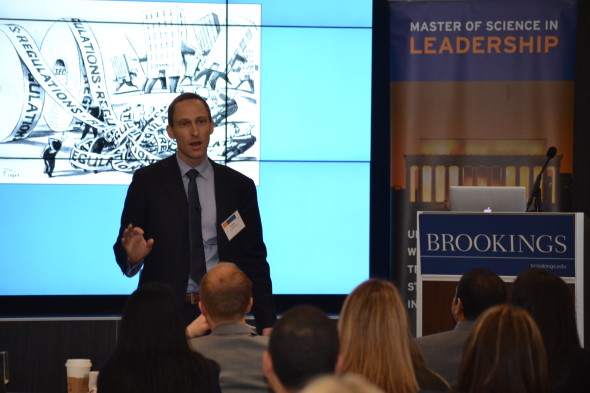 “Our goal with the residency is to cut through the political polarization that dominates the story coming out of Washington,” explains Lamar Pierce, Associate Professor of Organization and Strategy and at Olin and BEE faculty member. “We want our students to understand that most of the people in our capital are committed to helping create a better world, and although they may disagree about how to achieve that, they’re trying to solve the same problems.”
“Our goal with the residency is to cut through the political polarization that dominates the story coming out of Washington,” explains Lamar Pierce, Associate Professor of Organization and Strategy and at Olin and BEE faculty member. “We want our students to understand that most of the people in our capital are committed to helping create a better world, and although they may disagree about how to achieve that, they’re trying to solve the same problems.”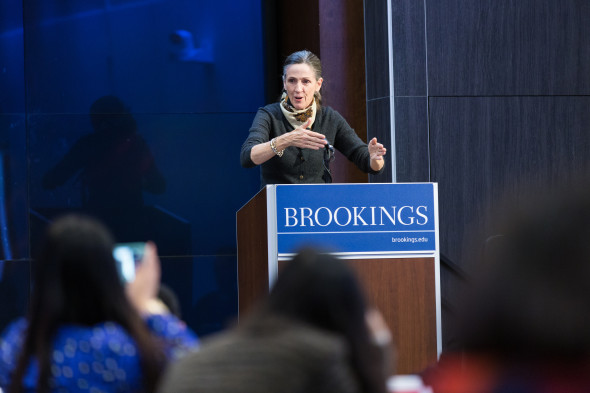 The program broadens students’ perspectives and offers unique insight into how non-market strategy shapes and frames the institutional landscapes in which firms operate. Through active participation and dialogue, the program reminds leaders in both the private and public sector that the best solutions to complex problems result from healthy collaboration between business, government, and broader society.
The program broadens students’ perspectives and offers unique insight into how non-market strategy shapes and frames the institutional landscapes in which firms operate. Through active participation and dialogue, the program reminds leaders in both the private and public sector that the best solutions to complex problems result from healthy collaboration between business, government, and broader society.

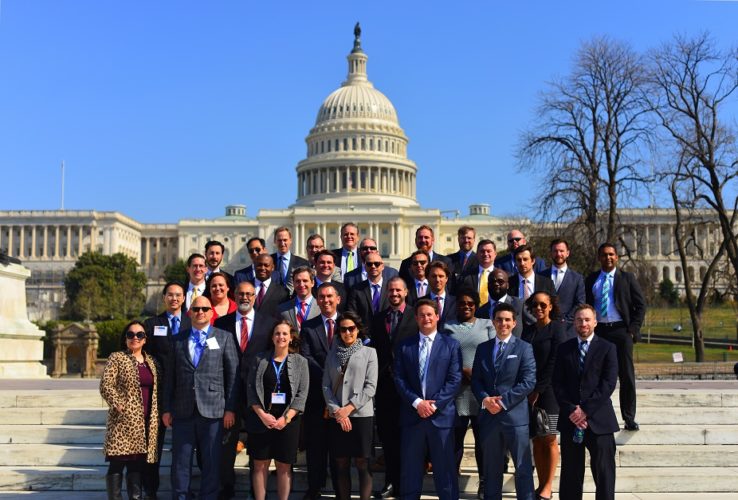

 Dr. Joyce brings to the Academy a unique understanding of leadership and human capital development particular to the federal government.Dr. Joyce will be an unparalleled asset as a Fellow and will provide valuable insight into issues that explore the policy making process and public leadership.
Dr. Joyce brings to the Academy a unique understanding of leadership and human capital development particular to the federal government.Dr. Joyce will be an unparalleled asset as a Fellow and will provide valuable insight into issues that explore the policy making process and public leadership.


